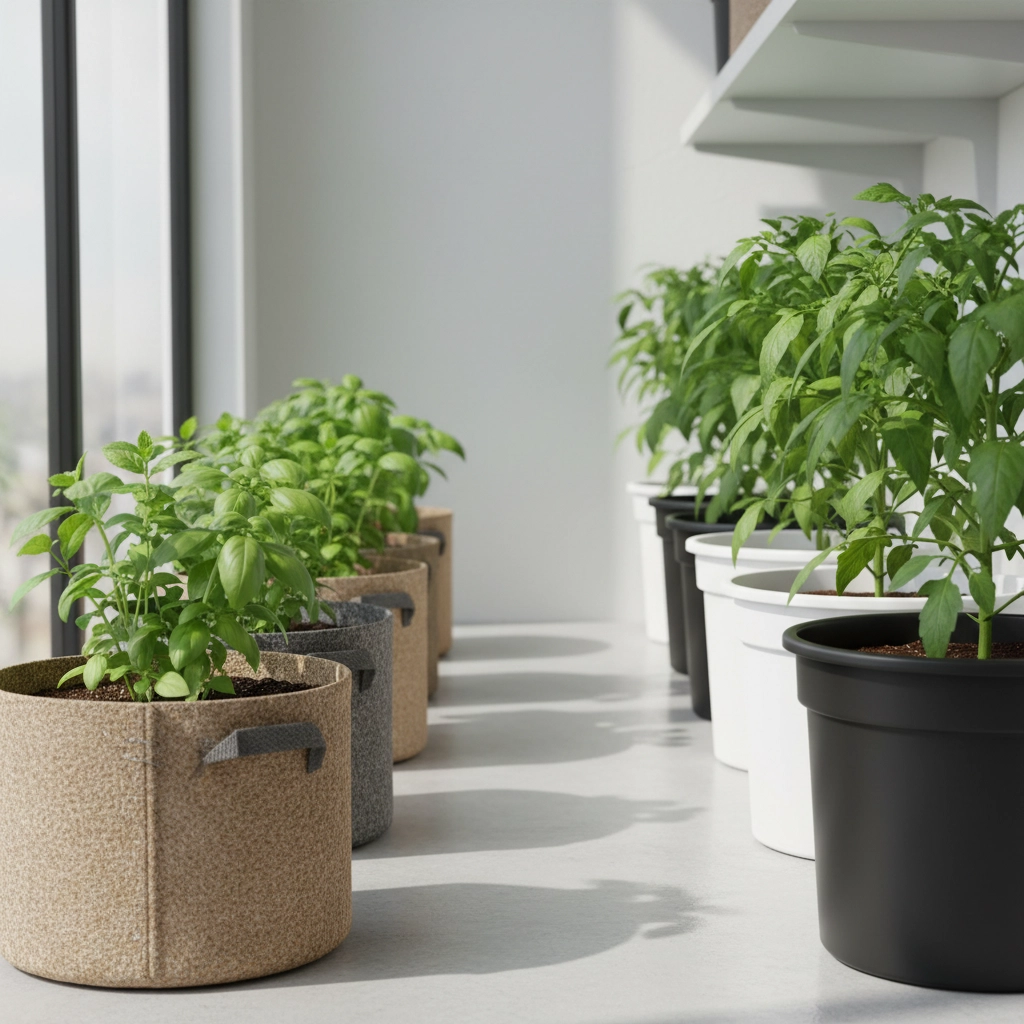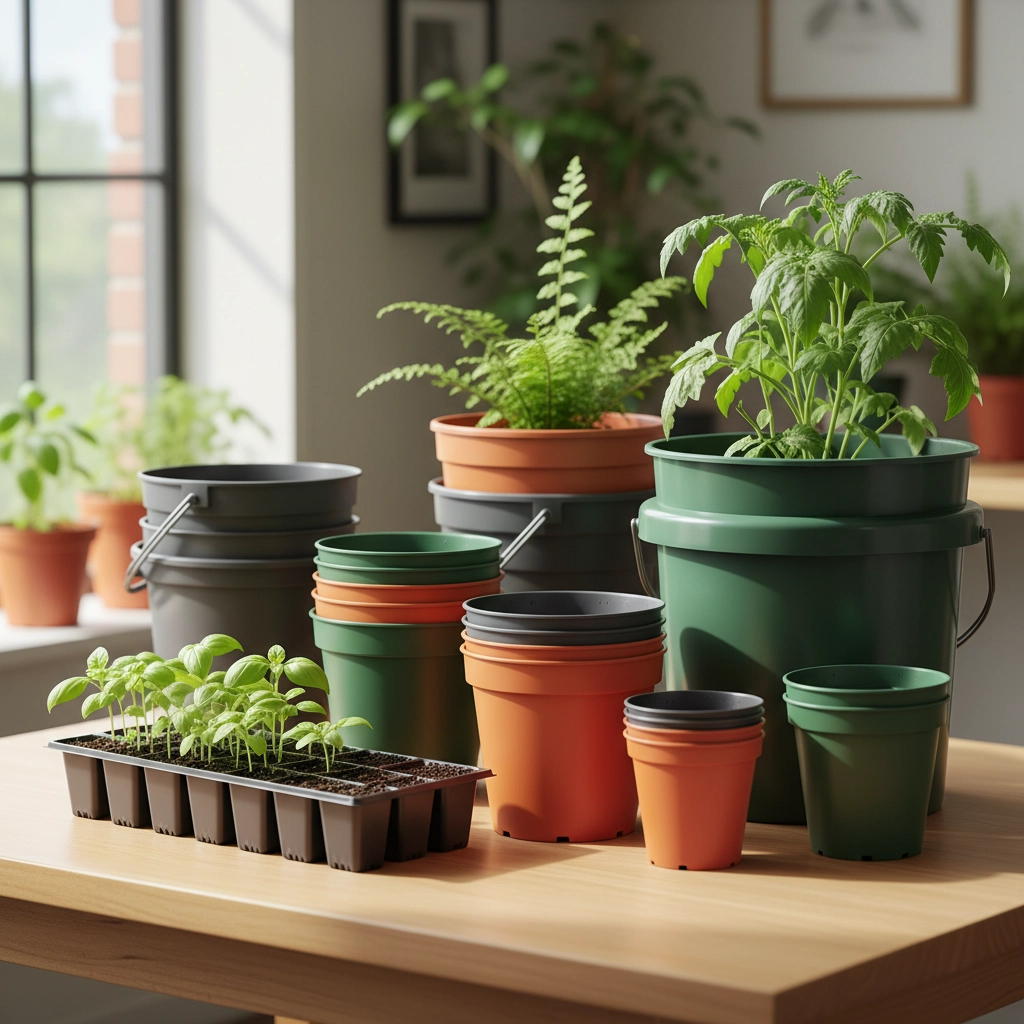Blog
Fabric Grow Pots vs Plastic Containers: Which Saves You More Money in 2025? (Real Cost Breakdown)
When Sarah, a hydroponic tomato grower from Colorado, started her indoor garden three years ago, she thought she was making the smart financial choice by buying fabric pots. "They were $3 cheaper per pot than the plastic ones," she recalls. "I figured I'd save maybe $150 on my initial setup." Fast forward to today, and Sarah has replaced those fabric pots twice, spending nearly $400 more than if she'd chosen plastic from the start.
Sarah's experience isn't unique. As we dive into 2025, the fabric vs plastic pot debate has shifted from purely performance-based to cost-focused, especially as more home growers look to maximize their return on investment. The answer to which saves more money isn't as straightforward as you might think.
The Initial Purchase Reality Check
Let's start with what you'll actually pay at checkout. In 2025, the price gap between fabric and plastic pots has narrowed significantly. Rising petroleum costs have pushed plastic prices up, while increased fabric pot production has driven their costs down. Most growers now report seeing less than a 10-15% difference in initial purchase price.
For a standard 5-gallon growing setup, expect to pay:
- Fabric pots: $8-12 per pot
- Plastic containers: $10-15 per pot
Mike, who runs a small urban farm in Portland, switched to fabric pots last spring specifically because of this price difference. "I needed 50 pots for my expansion, and saving even $2 per pot meant keeping $100 in my pocket upfront," he explains. But Mike's story takes an interesting turn when we look at the bigger picture.

The Hidden Long-Term Math
Here's where the real cost analysis gets interesting. Fabric pots typically last 2-4 growing seasons before they need replacement. The material breaks down, develops tears, or becomes impossible to clean properly. Plastic pots, on the other hand, can last decades with proper care.
Jennifer, a veteran grower from Arizona, puts it bluntly: "I bought my first set of plastic pots in 1995 for my greenhouse operation. Thirty years later, I'm still using about 70% of them. Try doing that with fabric."
The math works out like this over a 10-year period:
Fabric Pot Scenario (replacing every 3 years):
- Initial purchase: $10 × 20 pots = $200
- Replacement #1 (year 3): $200
- Replacement #2 (year 6): $200
- Replacement #3 (year 9): $200
- Total 10-year cost: $800
Plastic Pot Scenario:
- Initial purchase: $12 × 20 pots = $240
- Replacements needed: Maybe 2-3 pots due to cracks = $36
- Total 10-year cost: $276
Real Grower Experiences: The Durability Factor
The durability difference becomes crystal clear when you talk to growers who've used both. Tom, who manages a commercial lettuce operation in Ohio, made the switch from fabric to plastic after calculating his replacement costs.
"We were going through fabric pots like crazy," Tom shares. "Between the constant wet-dry cycles and moving them around for cleaning, we'd lose about 20% of our fabric pots each season to tears or excessive wear. With plastic, we might lose 2-3% to actual damage."
This durability gap affects more than just replacement frequency. Fabric pots require more careful handling, which translates to additional labor costs. Maria, a home grower in Texas, learned this lesson the hard way: "I spent an entire weekend trying to clean and repair fabric pots that had developed small tears. With plastic, I just hose them down and stack them."
The Reusability Advantage
One of plastic's biggest cost advantages comes from its reusability potential. Many nurseries and garden centers offer free recycling programs for plastic pots, essentially giving you a free source of containers. Dave, a budget-conscious grower in Michigan, hasn't bought new pots in over five years thanks to these programs.
"I've got a deal with three local nurseries," Dave explains. "They let me take their used plastic pots for free rather than paying for disposal. I clean them up, and they're good as new. Try finding free fabric pots anywhere."

Hidden Costs That Add Up
Beyond the obvious replacement expenses, fabric pots carry several hidden costs that many growers don't consider initially:
Cleaning and Maintenance: Fabric pots require more intensive cleaning between grows. The porous material traps salt buildup and organic matter, requiring soaking and scrubbing that plastic pots don't need.
Storage Challenges: Fabric pots don't stack as efficiently as plastic when empty, requiring more storage space. For commercial operations, this can mean additional facility costs.
Handling Damage: The flexible nature of fabric pots makes them more prone to damage during transport and handling, leading to premature replacement.
Carlos, who grows herbs commercially in California, tracks these costs closely. "When I factored in the extra time for cleaning fabric pots and the storage space they require, I was looking at about $200 annually in hidden costs for my 200-pot operation. That's money that goes straight to the bottom line with plastic."
Environmental Factors Affecting 2025 Costs
The cost landscape has shifted notably in 2025 due to environmental regulations and material costs. Petroleum price volatility has made plastic manufacturing more expensive, while sustainable fabric production has benefited from government incentives in some regions.
However, this hasn't changed the fundamental economics for most growers. Lisa, an organic producer in Vermont, initially chose fabric pots for environmental reasons but switched back to plastic after calculating the total cost. "I was replacing fabric pots every two years in our harsh climate. Even with higher plastic prices, the longevity made them cheaper overall."
The Verdict: Which Actually Saves Money?
After analyzing real grower experiences and running the numbers multiple ways, plastic containers deliver significantly better value for cost-conscious growers. While fabric pots may offer a slight upfront saving, their short lifespan creates a cycle of replacement costs that quickly overwhelms any initial advantage.
The math is particularly compelling for:
- Long-term growers who plan to maintain gardens for multiple years
- Commercial operations where replacement costs scale significantly
- Budget-focused gardeners who prioritize total cost of ownership
Fabric pots only make financial sense in specific scenarios:
- Short-term growing projects (1-2 seasons maximum)
- Situations where portability outweighs cost considerations
- Growers who can source fabric pots at significantly below-market prices
Making the Smart Choice for Your Budget
When making your decision, consider your specific growing situation. If you're just starting out or testing different crops, the lower initial cost of fabric pots might work for your first season. However, once you're committed to ongoing growing, plastic containers will save money over time.
For growers looking to maximize their investment, consider exploring our fabric pot options for short-term projects while building a collection of durable plastic containers for your permanent growing setup.
The bottom line remains clear: while fabric pots have their place in specific growing scenarios, plastic containers offer superior long-term value for most growers focused on cost efficiency. Your wallet will thank you in the long run.
